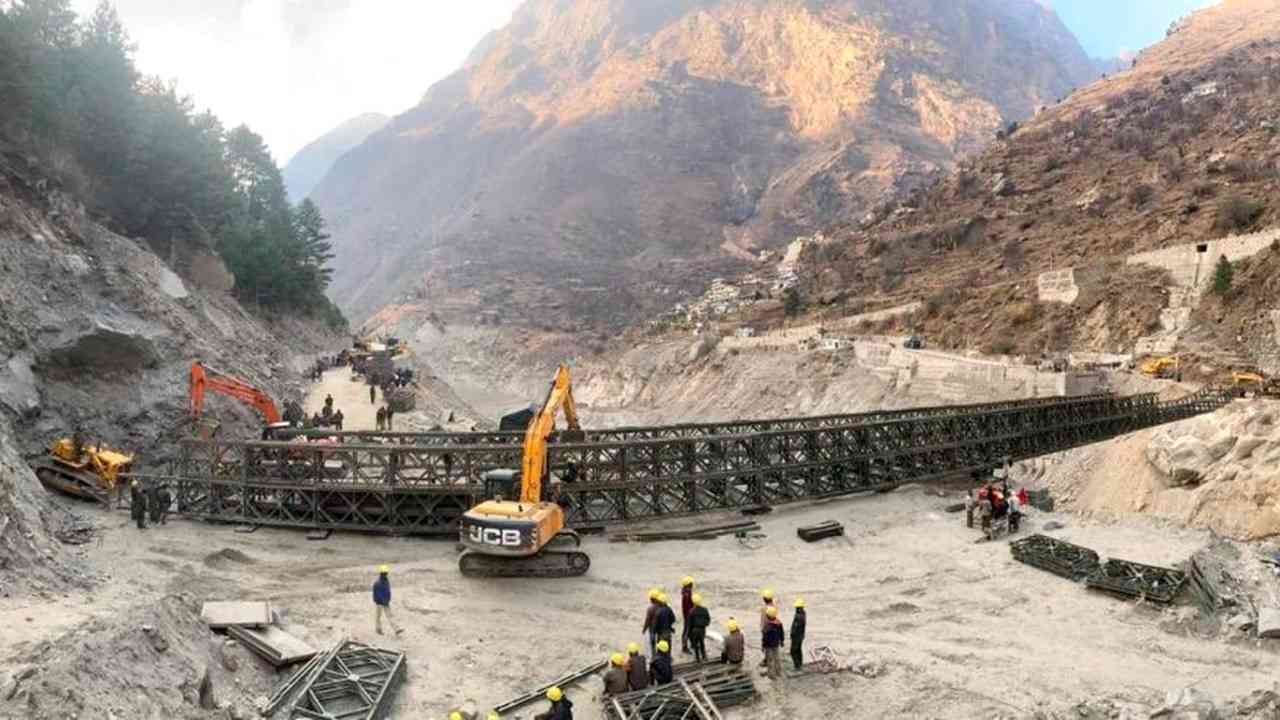Eight Border Roads Organisation (BRO) workers were killed, seven injured and 31 went missing in an avalanche near the Indo-China border in Uttarakhand’s Chamoli district, officials said on Saturday.
A total of 430 BRO workers were at the road-construction site when the avalanche occurred on Friday, Uttarakhand Director General of Police (DGP) Ashok Kumar said.
Two bodies were recovered from the site in the Sumna area of Niti Valley on Friday night, while six more were recovered on Saturday, he added.
Of the 430 workers, 384 have returned to the ITBP and Army camps in the area so far, eight are dead, seven injured have been rescued while 31 are missing, the DGP said, adding that a joint search-and-rescue operation by Army, ITBP, SDRF and NDRF personnel continues in the affected area.
The injured were rescued in helicopters and flown to the Army hospital in Joshimath.
The Indo-Tibetan Border Police (ITBP) and the Indian Army posts at Sumna are safe, the DGP said.
Sumna, where the avalanche occurred, is approximately 25 km from Malari village and located near the confluence of the Girthigad and the Kiogad, two streams that originate from the Dhauli Ganga river, which witnessed a calamitous avalanche in February, killing 80 people and leaving 126 missing.
A part of the Nanda Devi glacier broke off in Chamoli on February 7, leading to massive floods, recalling a 2019 study that warned about the dangers of climate change and said Himalayan glaciers have been melting twice as fast since the start of this century.
The glacier collapse at Joshimath led to a massive flood in the Alaknanda river system and caused large-scale devastation in the upper reaches of the ecologically fragile Himalayas.
In June 2019, a study spanning 40 years of satellite observations across India, China, Nepal and Bhutan, indicated that climate change is eating the Himalayas’ glaciers.
The study, published in the journal Science Advances, shows that glaciers have been losing the equivalent of more than a vertical foot and half of ice each year since 2000 — double the amount of melting that took place from 1975 to 2000.
Meanwhile, Chief Minister Tirath Singh Rawat undertook an aerial survey of the area to take stock of the situation. The Army and the district administration have been constantly engaged in the search-and-rescue operation since Friday night and have also been joined now by ITBP, National Disaster Response Force (NDRF) and State Disaster Response Force (SDRF) personnel, he said.
Union Home Minister Amit Shah has assured the state of all help in the rescue operation, Rawat said.
A similar avalanche at Sumna had killed 11 ITBP personnel in 1991.


















